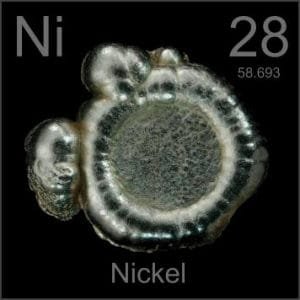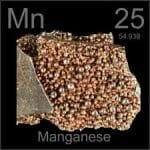Nickel Manganese Sputtering Target

Related Product: Nickel Sputtering Target

Related Product: Manganese Sputtering Target
Chemical Formula: Ni/Mn
Catalog Number: ST0104
CAS Number: 7440-02-0 | 7439
Purity: 99.9%
Shape: Discs, Plates, Column Targets, Step Targets, Custom-made
Nickel Manganese sputtering target come in various forms, purities, sizes, and prices. Thin Film Materials (TFM) manufactures and supplies top-quality sputtering targets at competitive prices.
The Nickel Manganese Sputtering Target from TFM is an alloy material composed of nickel (Ni) and manganese (Mn). This high-quality sputtering material is designed for applications that benefit from the combined properties of these two elements.

Nickel, symbolized as “Ni,” is a chemical element whose name is derived from the shortened German term ‘kupfernickel,’ meaning either devil’s copper or St. Nicholas’s copper. It was first mentioned and observed by F. Cronstedt in 1751, who also accomplished its isolation. Nickel has an atomic number of 28 and is located in Period 4, Group 10 of the d-block in the periodic table. Its relative atomic mass is 58.6934(2) Daltons, with the number in brackets indicating the measurement uncertainty.
Related Product: Nickel Sputtering Target

Manganese, symbolized as “Mn,” is a chemical element whose name originates either from the Latin word ‘magnes,’ meaning magnet, or from the black magnesium oxide, ‘magnesia nigra.’ It was first mentioned in 1770 and observed by O. Bergman, with its isolation later accomplished and announced by G. Gahn. Manganese has an atomic number of 25 and is located in Period 4, Group 7 of the d-block in the periodic table. Its relative atomic mass is 54.938045(5) Daltons, with the number in brackets indicating the measurement uncertainty.
Related Product: Manganese Sputtering Target
The Nickel Manganese Sputtering Target is widely used for thin film deposition in various industries. Its applications include decoration, semiconductors, displays, LED and photovoltaic devices, and functional coatings. Additionally, it is utilized in the optical information storage industry, glass coating for car and architectural glass, optical communication, and other related fields.
Our Nickel Manganese Sputtering Targets are meticulously handled to prevent any damage during storage and transportation. This careful handling ensures that our products maintain their original quality and arrive in perfect condition.
It’s the source material (in solid form) used in sputter deposition to eject atoms or molecules that then form a thin film on a substrate.
Targets can be pure metals (e.g., gold, copper, aluminum), ceramics (e.g., Al₂O₃, SiO₂, TiO₂), alloys, or composites—chosen based on the film’s desired properties.
They are produced by processes such as melting/casting for metals or sintering (often with hot isostatic pressing) for ceramics and composite targets to ensure high density and purity.
In a vacuum chamber, a plasma (typically argon) bombards the target, ejecting atoms that travel and condense on a substrate, forming a thin film.
Key factors include the target’s purity, density, grain structure, and the sputtering yield (i.e. how many atoms are ejected per incident ion), as well as operating conditions like power density and gas pressure.
Operators monitor target erosion (often by measuring the depth of the eroded “race track”) or track total energy delivered (kilowatt-hours) until it reaches a threshold that can compromise film quality.
Fragile materials (such as many ceramics or certain oxides) and precious metals often require a backing plate to improve cooling, mechanical stability, and to allow thinner targets that reduce material costs.
DC sputtering is used for conductive targets, while RF sputtering is necessary for insulating targets (like many oxides) because it prevents charge buildup on the target’s surface.
In reactive sputtering, a reactive gas (e.g., oxygen or nitrogen) is introduced to form compound films on the substrate, but it may also “poison” the target surface if not carefully controlled.
Many manufacturers prefer to control raw material quality by sourcing their own powders; using external powders can risk impurities and inconsistent target properties.
Targets should be stored in clean, dry conditions (often in original packaging or re-wrapped in protective materials) and handled with gloves to avoid contamination, ensuring optimal performance during deposition.
Deposition rate depends on factors such as target material and composition, power density, working gas pressure, substrate distance, and the configuration of the sputtering system (e.g., magnetron design).
Reviews
There are no reviews yet.